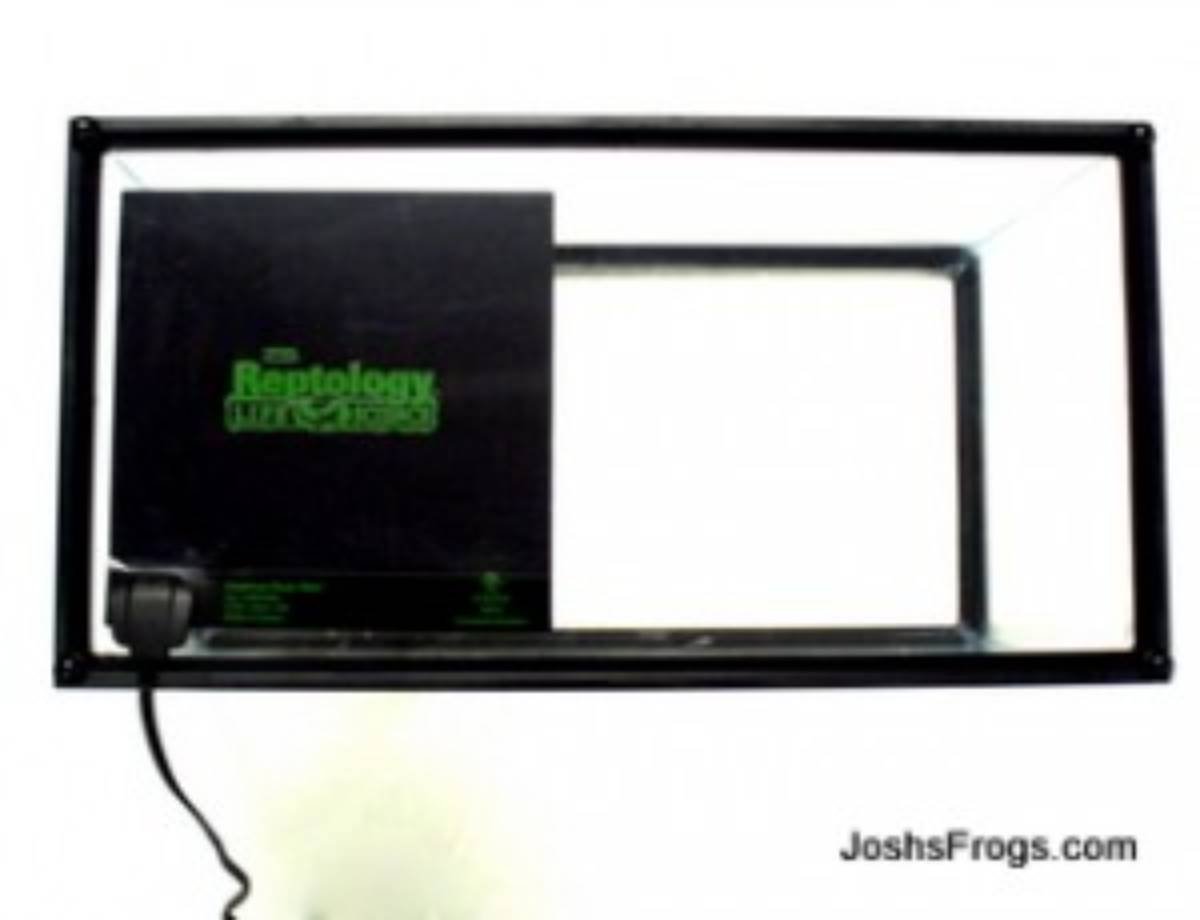Josh's Frogs
Why you should buy from us
Heating Your Vivarium
Keeping your Critters Cozy and Warm
During the winter, it is not uncommon for average household temperatures to be several degrees lower than normal. This cooler environment may lead to a lower-than-average temperature inside the vivarium, to the point that steps need to be taken to heat it.
Although dart frogs (any many other reptile or amphibian inhabitants) can tolerate temperatures into the mid 50s, they benefit from warmer, more stable conditions. This blog post will go over 5 of the most common ways to heat a vivarium: heat pads, heater cables, submersible water heaters, radiant heat lamps, and room/space heaters.
Regardless of the method you choose to go about heating a vivarium, I strongly recommend utilizing a reliable digital thermometer to monitor temperatures.
Heat Pads
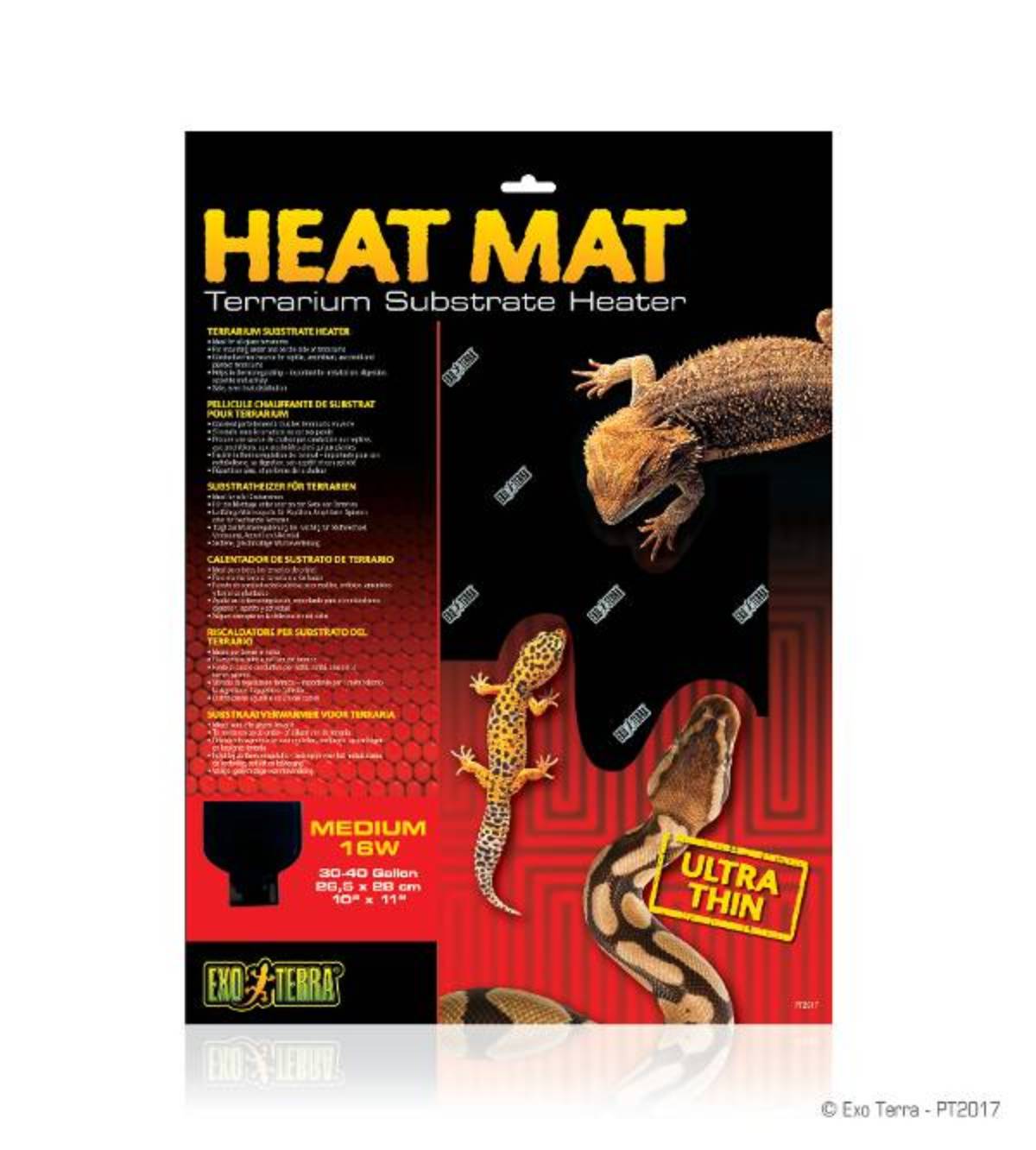
Heat pads can be useful when heating the vivarium.
Heat pads are typically applied on the bottom or side of the vivarium. When used on the bottom, they are more effective raising the overall temperature of the vivarium, as they will heat any water standing in the false bottom/drainage layer. When applied to the side, heat pads can be an effective way of creating a horizontal heat gradient.
There are stories that heat pads can crack the bottom of a tank–when used with a thermostat, as they are designed for, this should not be an issue.
Heating pads can be attached from the bottom or the side.
Heater Cable
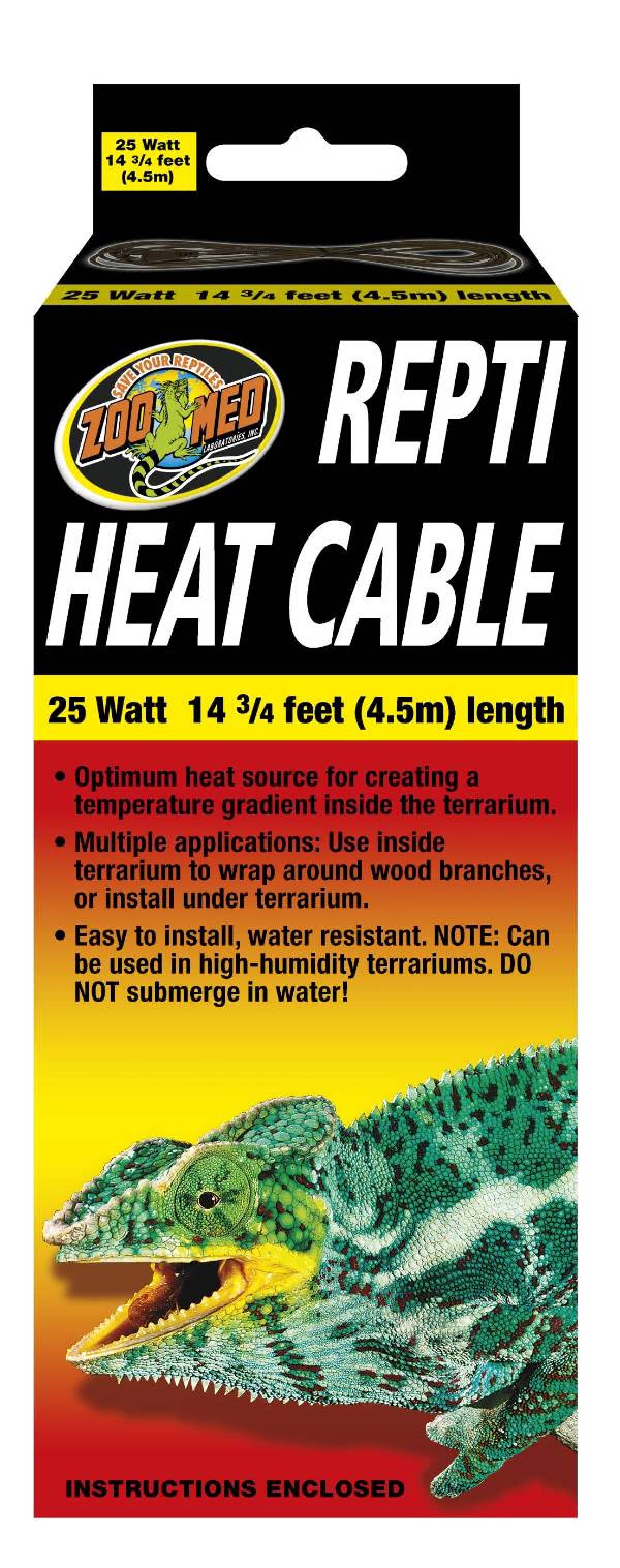
Heater cable can be buried in the substrate, providing a source of even heating in the vivarium.
Similar to a heat pad, heater cable is basically a long, insulated cable that contains a heating element inside. The cable is generally waterproof, and can be buried in substrate or placed in hollow limbs (such as bamboo).
By placing the heater cable in a certain location, a hot spot can be produced. If the heater cable is more evenly distributed over the entire vivarium (i.e. buried in the substrate), it can be used to evenly raise the ambient temperature of the vivarium. As with heat pads, this product was designed to be used with a thermostat, and it is strongly recommended.
Submersible Water Heaters
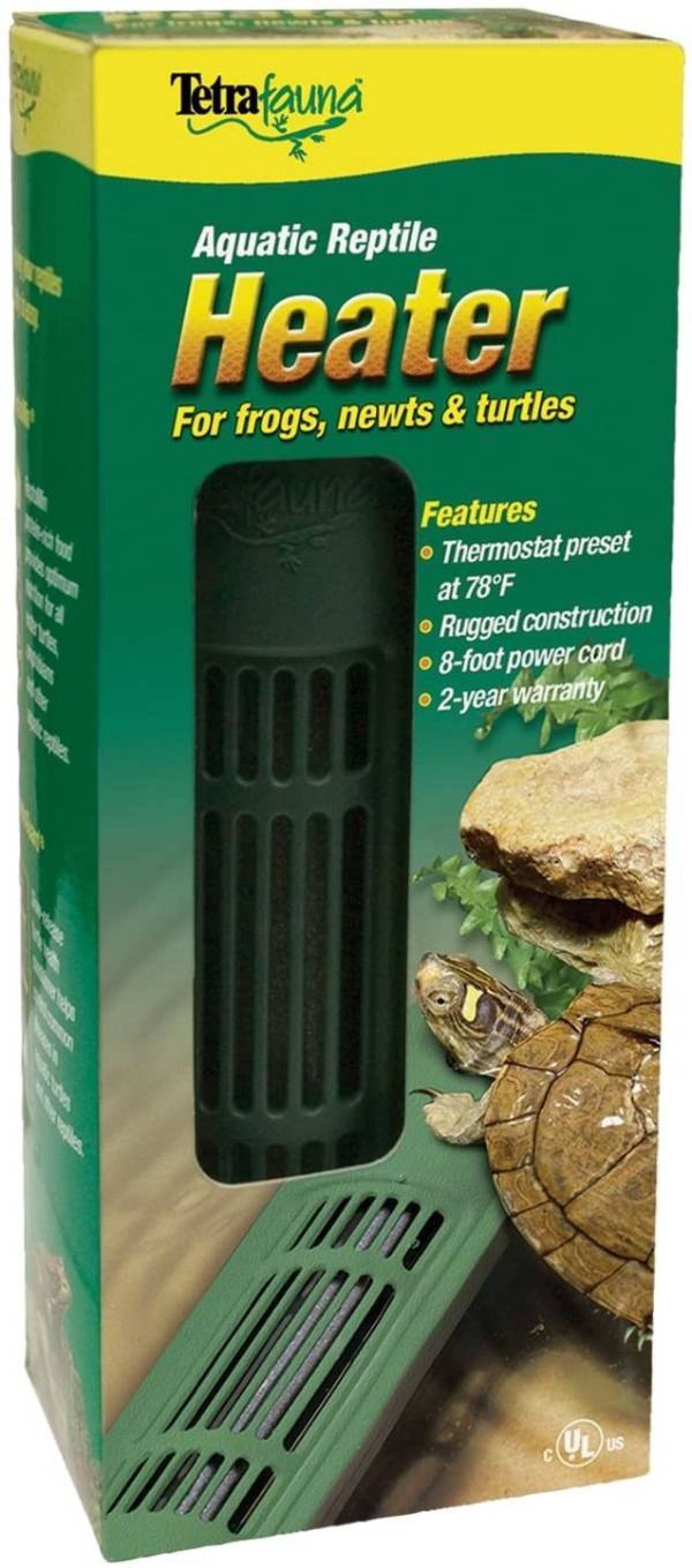
Many of the newer submersible water heaters are plastic, eliminating the dangers of a shattered glass heater.
Also called aquarium water heaters, submersible water heaters have a long history of being used in vivariums to raise the ambient temperature. Water heaters are placed in the water in the false bottom or drainage layer of a vivarium. When placing a submersible water heater, ensure that it will be easy to remove if the water heater malfunctions or needs to be adjusted. Also, make sure that the submersible water heater will always be underwater—glass water heaters can shatter if exposed to air.
Many of the newer submersible water heaters are made of plastic or metal that eliminate the threat of your water heater shattering and releasing dangerous chemicals and metals into the delicate ecosystem of your vivarium.
A lot of submersible water heaters are preset to 78°F – this can work in some situations, but acquiring a submersible water heater that can be tuned to the desired temperature is preferable.
Radiant Heat Lamps
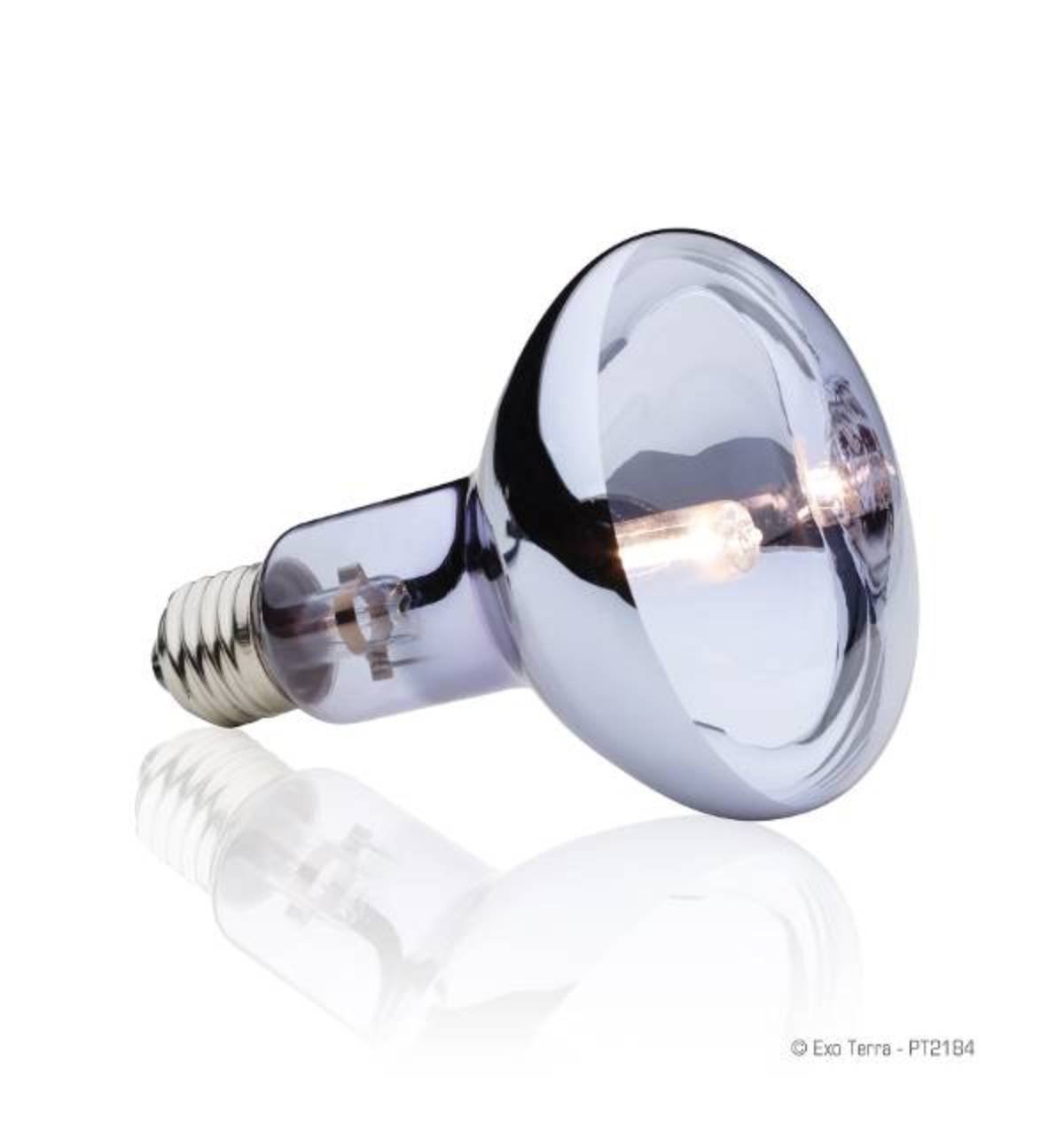
Radiant basking bulbs, such as this halogen bulb, are a great way to provide basking spots in the vivarium for species that require them.
Generally used to provide a basking site for reptiles, radiant heat lamps can be used successfully in vivaria, as long as advanced planning is given. Many amphibians, dart frogs included, tend to utilize basking spots if they are provided, even when temperatures are not below average to begin with!
There are several different basking lights available on the market—in my experience, halogen bulbs are the most efficient. They tend to be lower wattage than traditional filament basking bulbs, and are very good at creating small basking areas at a distance. Generally, the bulb should be shining into the vivarium through screen—glass may shatter under the halogen bulb as it is heated.
Due to the need for at least a partial screen top when utilizing a basking bulb and the resulting humidity loss due to evaporation, you must figure out how to aid in increasing/maintaining the overall humidity of the enclosure. Automated misting/fogging will greatly increase your ability to maintain humidity when using basking/radiant heat bulbs.
Room/Space Heaters
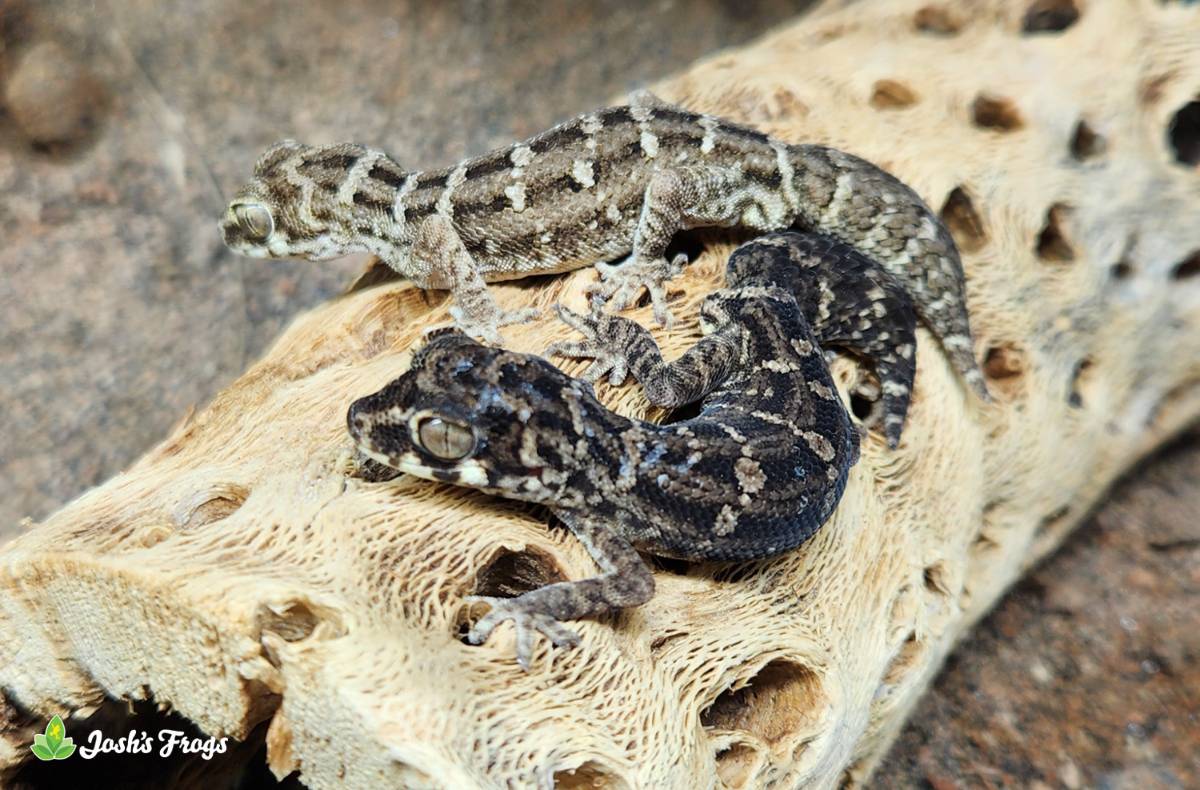
A room full of vivariums containing animals that enjoy heat, such as these viper geckos, would benefit from a room or space heater.
For those of us who have given in to the addiction and now maintain several vivariums, or a room dedicated to them, it can be much more efficient to heat an entire room instead of individual vivaria. From infrared heaters to space heaters to oil-filled radiators, there are several different modes of heating your room. Choosing the one that is right for you will depend on your individual situation and your budget. For my frog room at home, I chose a unit that functions both as a heater and AC, and vents outside.
Conclusion
One of the responsibilities that comes with animal ownership is providing your captive with an environment that meets it's needs. Steps must be taken to ensure that your reptile or amphibian pet is kept within a temperature range that the animal is comfortable.


